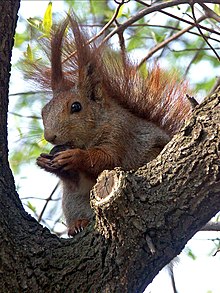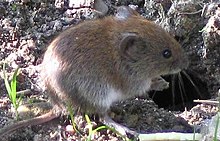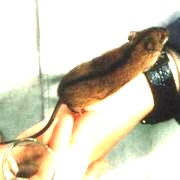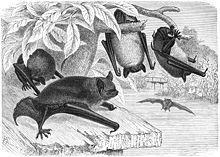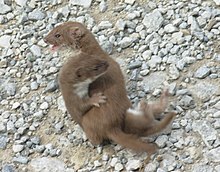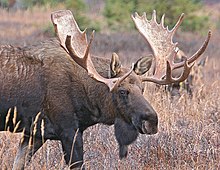J u m p t o c o n t e n t
M a i n m e n u
M a i n m e n u
N a v i g a t i o n
● M a i n p a g e ● C o n t e n t s ● C u r r e n t e v e n t s ● R a n d o m a r t i c l e ● A b o u t W i k i p e d i a ● C o n t a c t u s ● D o n a t e
C o n t r i b u t e
● H e l p ● L e a r n t o e d i t ● C o m m u n i t y p o r t a l ● R e c e n t c h a n g e s ● U p l o a d f i l e
S e a r c h
Search
A p p e a r a n c e
● C r e a t e a c c o u n t ● L o g i n
P e r s o n a l t o o l s
● C r e a t e a c c o u n t ● L o g i n
P a g e s f o r l o g g e d o u t e d i t o r s l e a r n m o r e ● C o n t r i b u t i o n s ● T a l k
( T o p )
1 O r d e r : R o d e n t i a ( r o d e n t s )
2 O r d e r : L a g o m o r p h a ( l a g o m o r p h s )
3 O r d e r : E r i n a c e o m o r p h a ( h e d g e h o g s a n d g y m n u r e s )
4 O r d e r : S o r i c o m o r p h a ( s h r e w s , m o l e s , a n d s o l e n o d o n s )
5 O r d e r : C h i r o p t e r a ( b a t s )
6 O r d e r : C a r n i v o r a ( c a r n i v o r a n s )
7 O r d e r : A r t i o d a c t y l a ( e v e n - t o e d u n g u l a t e s )
8 L o c a l l y e x t i n c t
9 S e e a l s o
10 R e f e r e n c e s
11 E x t e r n a l l i n k s
T o g g l e t h e t a b l e o f c o n t e n t s
L i s t o f m a m m a l s o f A u s t r i a
3 l a n g u a g e s
● F r a n ç a i s ● Р у с с к и й ● У к р а ї н с ь к а
E d i t l i n k s
● A r t i c l e ● T a l k
E n g l i s h
● R e a d ● E d i t ● V i e w h i s t o r y
T o o l s
T o o l s
A c t i o n s
● R e a d ● E d i t ● V i e w h i s t o r y
G e n e r a l
● W h a t l i n k s h e r e ● R e l a t e d c h a n g e s ● U p l o a d f i l e ● S p e c i a l p a g e s ● P e r m a n e n t l i n k ● P a g e i n f o r m a t i o n ● C i t e t h i s p a g e ● G e t s h o r t e n e d U R L ● D o w n l o a d Q R c o d e ● W i k i d a t a i t e m
P r i n t / e x p o r t
● D o w n l o a d a s P D F ● P r i n t a b l e v e r s i o n
I n o t h e r p r o j e c t s
● W i k i m e d i a C o m m o n s
A p p e a r a n c e
F r o m W i k i p e d i a , t h e f r e e e n c y c l o p e d i a
This list shows the IUCN Red List status of the 81 mammal species occurring in Austria . One of them is endangered , five are vulnerable , and three are near threatened .
The following tags are used to highlight each species' status as assessed on the respective IUCN Red List published by the International Union for Conservation of Nature :
EX Extinct No reasonable doubt that the last individual has died.
EW Extinct in the wild Known only to survive in captivity or as a naturalized populations well outside its previous range.
CR Critically endangered The species is in imminent risk of extinction in the wild.
EN Endangered The species is facing an extremely high risk of extinction in the wild.
VU Vulnerable The species is facing a high risk of extinction in the wild.
NT Near threatened The species does not meet any of the criteria that would categorise it as risking extinction but it is likely to do so in the future.
LC Least concern There are no current identifiable risks to the species.
DD Data deficient There is inadequate information to make an assessment of the risks to this species.
[ edit ] Red squirrel European edible dormouse Northern birch mouse Bank vole Tundra vole Striped field mouse Eurasian harvest mouse
Rodents make up the largest order of mammals, with over 40% of mammalian species. They have two incisors in the upper and lower jaw which grow continually and must be kept short by gnawing.
[ edit ] Mountain hare
The lagomorphs comprise two families, Leporidae (hares and rabbits ), and Ochotonidae (pikas ). Though they can resemble rodents , and were classified as a superfamily in that order until the early 20th century, they have since been considered a separate order. They differ from rodents in a number of physical characteristics, such as having four incisors in the upper jaw rather than two.
[ edit ] West European hedgehog
The order Erinaceomorpha contains a single family, Erinaceidae, which comprise the hedgehogs and gymnures . The hedgehogs are easily recognised by their spines while gymnures look more like large rats.
[ edit ] Lesser white-toothed shrew Eurasian pygmy shrew
The Soricomorpha are insectivorous mammals. The shrews and solenodons resemble mice while the moles are stout-bodied burrowers.
[ edit ] Daubenton's bat Lesser noctule Nathusius' pipistrelle Brown long-eared bat
The bats' most distinguishing feature is that their forelimbs are developed as wings, making them the only mammals capable of flight. Bat species account for about 20% of all mammals.
[ edit ] European jackal (Canis aureus moreotica ) Least weasel
There are over 260 species of carnivorans, the majority of which feed primarily on meat. They have a characteristic skull shape and dentition.
[ edit ] Moose
The even-toed ungulates are ungulates whose weight is borne about equally by the third and fourth toes, rather than mostly or entirely by the third as in perissodactyls . There are about 220 artiodactyl species, including many that are of great economic importance to humans.
Locally extinct
[ edit ]
The following species are locally extinct in the country:
See also
[ edit ]
References
[ edit ]
^ Banaszek, A.; Bogomolov, P.; Feoktistova, N.; La Haye, M.; Monecke, S.; Reiners, T. E.; Rusin, M.; Surov, A.; Weinhold, U. & Ziomek, J. (2020). "Cricetus cricetus " . IUCN Red List of Threatened Species 2020 : e.T5529A111875852.
^ Batsaikhan, N.; Henttonen, H.; Meinig, H.; Shenbrot, G.; Bukhnikashvili, A.; Hutterer, R.; Kryštufek, B.; Yigit, N.; Mitsain, G. & Palomo, L. (2016). "Arvicola amphibius " . IUCN Red List of Threatened Species 2016 : e.T2149A115060819. doi :10.2305/IUCN.UK.2016-3.RLTS.T2149A115060819.en
^ Meinig, H. (2019). "Microtus bavaricus " . IUCN Red List of Threatened Species 2019 : e.T13461A90865453. Retrieved 6 December 2022 .
^ Hacklande, K. & Schai-Braun, S. (2019). "Lepus europaeus " . IUCN Red List of Threatened Species 2019 : e.T41280A45187424.
^ Smith, A.T. & Johnston, C.H. (2019). "Lepus timidus " . IUCN Red List of Threatened Species 2019 : e.T11791A45177198.
^ Villafuerte, R. & Delibes-Mateos, M. (2019). "Oryctolagus cuniculus " . IUCN Red List of Threatened Species 2019 : e.T41291A45189779.
^ Amori, G.; Hutterer, R.; Kryštufek, B.; Yigit, N.; Mitsain, G. & Palomo, L. J. (2008). "Erinaceus europaeus " . IUCN Red List of Threatened Species 2008 : e.T29650A9508000.
^ Hutterer, R.; Amori, G.; Krystufek, B.; Yigit, N.; Mitsain, G. & Palomo, L.J. (2010). "Crocidura suaveolens " . IUCN Red List of Threatened Species 2010 : e.T29656A9511068.
^ Paunović, M. (2019). "Myotis bechsteinii " . IUCN Red List of Threatened Species 2019 : e.T14123A22053752.
^ Coroiu, I.; Juste, J. & Paunović, M. (2016). "Myotis myotis " . IUCN Red List of Threatened Species 2016 : e.T14133A22051759.
^ Juste, J. & Paunović, M. (2016). "Myotis blythii " . IUCN Red List of Threatened Species 2016 : e.T14124A22053297.
^ Gazaryan, S.; Kruskop, S.V.; Godlevska, L. (2020). "Myotis brandtii " . IUCN Red List of Threatened Species 2020 : e.T85566997A22054468.
^ Piraccini, R. (2016). "Myotis emarginatus " . IUCN Red List of Threatened Species 2016 : e.T14129A22051191.
^ Coroiu, I. (2016). "Myotis mystacinus " . IUCN Red List of Threatened Species 2016 : e.T14134A22052250.
^ Gazaryan, S.; Kruskop, S.V. & Godlevska, L. (2020). "Myotis nattereri " . IUCN Red List of Threatened Species 2020 : e.T85733032A22052584.
^ Piraccini, R. (2016). "Barbastella barbastellus " . IUCN Red List of Threatened Species 2016 : e.T2553A22029285.
^ Godlevska, L.; Kruskop, S.V.; Gazaryan, S. (2020) [amended version of 2020 assessment]. "Eptesicus serotinus " . IUCN Red List of Threatened Species 2020 : e.T85199559A195834153.
^ Juste, J. & Paunović, M. (2016). "Nyctalus leisleri " . IUCN Red List of Threatened Species 2016 : e.T14919A22016159.
^ Csorba, G. & Hutson, A.M. (2016). "Nyctalus noctula " . IUCN Red List of Threatened Species 2016 : e.T14920A22015682.
^ Hutson, A. M.; Spitzenberger, F.; Juste, J.; Aulagnier, S.; Palmeirim, J.; Karatas, A. & Paunovic, M. (2010). "Pipistrellus nathusii " . IUCN Red List of Threatened Species 2010 : e.T17316A6966886.
^ Hutson, A. M.; Spitzenberger, F.; Juste, J.; Aulagnier, S.; Palmeirim, J.; Paunovic, M. & Karatas, A. (2010). "Hypsugo savii " . IUCN Red List of Threatened Species 2010 : e.T44856A10955205.
^ Gazaryan, S.; Kruskop, S.V. & Godlevska, L. (2021) [errata version of 2020 assessment]. "Plecotus auritus " . IUCN Red List of Threatened Species 2020 : e.T85535522A195861341.
^ Gazaryan, S. & Godlevska, L. (2020) [amended version of 2020 assessment]. "Plecotus austriacus " . IUCN Red List of Threatened Species 2020 : e.T85533333A195862345.
^ Taylor, P. (2016). "Rhinolophus blasii " . IUCN Red List of Threatened Species 2016 : e.T19515A21972073.
^ Piraccini, R. (2016). "Rhinolophus ferrumequinum " . IUCN Red List of Threatened Species 2016 : e.T19517A21973253.
^ Taylor, P. (2016). "Rhinolophus hipposideros " . IUCN Red List of Threatened Species 2016 : e.T19518A21972794.
^ Gerngross, P.; Ambarli, H.; Angelici, F.M.; Anile, S.; Campbell, R.; Ferreras de Andres, P.; Gil-Sanchez, J.M.; Götz, M.; Jerosch, S.; Mengüllüoglu, D.; Monterosso, P. & Zlatanova, D. (2022). "Felis silvestris " . IUCN Red List of Threatened Species 2022 : e.T181049859A181050999. doi :10.2305/IUCN.UK.2022-1.RLTS.T181049859A181050999.en . Retrieved 3 August 2022 .
^ Breitenmoser, U.; Breitenmoser-Würsten, C.; Lanz, T.; von Arx, M.; Antonevich, A.; Bao, W. & Avgan, B. (2015). "Lynx lynx " . IUCN Red List of Threatened Species 2015 : e.T12519A121707666.
^ Hoffmann, M. & Sillero-Zubiri, C. (2016). "Vulpes vulpes " . IUCN Red List of Threatened Species 2016 : e.T23062A46190249.
^ Hoffmann, M.; Arnold, J.; Duckworth, J. W.; Jhala , Y.; Kamler, J. F. & Krofel, M. (2018). "Canis aureus " . IUCN Red List of Threatened Species 2018 : e.T118264161A46194820.
^ Boitani, L.; Phillips, M. & Jhala , Y. (2018). "Canis lupus " . IUCN Red List of Threatened Species 2018 : e.T3746A119623865.
^ McLellan, B. N.; Proctor, M. F.; Huber, D. & Michel, S. (2017). "Ursus arctos " . IUCN Red List of Threatened Species 2017 : e.T41688A121229971.
^ Roos, A.; Loy, A.; de Silva, P.; Hajkova, P. & Zemanová, B. (2015). "Lutra lutra " . IUCN Red List of Threatened Species 2015 : e.T12419A21935287.
^ Abramov, A.V.; Kranz, A.; Herrero, J.; Krantz, A.; Choudhury, A. & Maran, T. (2016). "Martes foina " . IUCN Red List of Threatened Species 2016 : e.T29672A45202514.
^ Herrero, J.; Kranz, A.; Skumatov, D.; Abramov, A.V.; Maran, T. & Monakhov, V.G. (2016). "Martes martes " . IUCN Red List of Threatened Species 2016 : e.T12848A45199169.
^ Kranz, A.; Abramov, A. V.; Herrero, J. & Maran, T. (2016). "Meles meles " . IUCN Red List of Threatened Species 2016 : e.T29673A45203002.
^ Reid, F.; Helgen, K. & Kranz, A. (2016). "Mustela erminea " . IUCN Red List of Threatened Species 2016 : e.T29674A45203335.
^ McDonald, R. A.; Abramov, A. V.; Stubbe, M.; Herrero, J.; Maran, T.; Tikhonov, A.; Cavallini, P.; Kranz, A.; Giannatos, G.; Kryštufek, B. & Reid, F. (2019). "Mustela nivalis" . IUCN Red List of Threatened Species 2019 : e.T70207409A147993366.
^ Skumatov, D.; Abramov, A.V.; Herrero, J.; Kitchener, A.; Maran, T.; Kranz, A.; Sándor, A.; Stubbe, M.; Saveljev, A.; Savour-Soubelet, A.; Guinot-Ghestem, M.; Zuberogoitia, I.; Birks, J.D.S.; Weber, A.; Melisch, R. & Ruette, S. (2016). "Mustela putorius " . IUCN Red List of Threatened Species 2016 : e.T41658A45214384.
^ Reid, F.; Schiaffini, M. & Schipper, J. (2016). "Neovison vison " . IUCN Red List of Threatened Species 2016 : e.T41661A45214988.
^ Lovari, S.; Lorenzini, R.; Masseti, M.; Pereladova, O.; Carden, R.F.; Brook, S.M. & Mattioli, S. (2018). "Cervus elaphus " . IUCN Red List of Threatened Species 2018 : e.T55997072A142404453.
^ Masseti, M.; Mertzanidou, D. (2008). "Dama dama " . IUCN Red List of Threatened Species 2008 : e.T42188A10656554. doi :10.2305/IUCN.UK.2008.RLTS.T42188A10656554.en . Retrieved 19 November 2021 .
^ Lovari, S.; Herrero, J.; Masseti, M.; Ambarli, H.; Lorenzini, R. & Giannatos, G. (2016). "Capreolus capreolus " . IUCN Red List of Threatened Species 2016 : e.T42395A22161386.
^ Toïgo, C.; Brambilla, A.; Grignolio, S. & Pedrotti, L. (2020). "Capra ibex " . IUCN Red List of Threatened Species 2020 : e.T42397A161916377.
^ Aulagnier, S.; Giannatos, G. & Herrero, J. (2008). "Rupicapra rupicapra " . IUCN Red List of Threatened Species 2008 : e.T39255A10179647.
^ Keuling, O. & Leus, K. (2019). "Sus scrofa " . IUCN Red List of Threatened Species 2019 : e.T41775A44141833.
^ Hundertmark, K. (2016). "Alces alces " . IUCN Red List of Threatened Species 2016 : e.T56003281A22157381.
^ Plumb, G.; Kowalczyk, R. & Hernandez-Blanco, J.A. (2020). "Bison bonasus " . IUCN Red List of Threatened Species 2020 : e.T2814A45156279.
^ Gazaryan, S.; Bücs, S. & Çoraman, E. (2021) [errata version of 2020 assessment]. "Miniopterus schreibersii " . IUCN Red List of Threatened Species 2020 : e.T81633057A19585652.
^ Maran, T.; Aulagnier, S.; Libois, R.; Kranz, A.; Abramov, A. & Wozencraft, C. (2010). "Mustela lutreola " . IUCN Red List of Threatened Species 2010 : e.T14018A4381596.
External links
[ edit ]
t
e
Sovereign states
States with limited
Dependencies and
R e t r i e v e d f r o m " https://en.wikipedia.org/w/index.php?title=List_of_mammals_of_Austria&oldid=1178868198 " C a t e g o r i e s : ● L i s t s o f m a m m a l s o f E u r o p e ● L i s t s o f b i o t a o f A u s t r i a ● F a u n a o f A u s t r i a ● L i s t s o f m a m m a l s b y c o u n t r y H i d d e n c a t e g o r i e s : ● C i t e I U C N w i t h o u t d o i ● A r t i c l e s w i t h s h o r t d e s c r i p t i o n ● S h o r t d e s c r i p t i o n i s d i f f e r e n t f r o m W i k i d a t a
● T h i s p a g e w a s l a s t e d i t e d o n 6 O c t o b e r 2 0 2 3 , a t 1 2 : 0 0 ( U T C ) . ● T e x t i s a v a i l a b l e u n d e r t h e C r e a t i v e C o m m o n s A t t r i b u t i o n - S h a r e A l i k e L i c e n s e 4 . 0 ;
a d d i t i o n a l t e r m s m a y a p p l y . B y u s i n g t h i s s i t e , y o u a g r e e t o t h e T e r m s o f U s e a n d P r i v a c y P o l i c y . W i k i p e d i a ® i s a r e g i s t e r e d t r a d e m a r k o f t h e W i k i m e d i a F o u n d a t i o n , I n c . , a n o n - p r o f i t o r g a n i z a t i o n . ● P r i v a c y p o l i c y ● A b o u t W i k i p e d i a ● D i s c l a i m e r s ● C o n t a c t W i k i p e d i a ● C o d e o f C o n d u c t ● D e v e l o p e r s ● S t a t i s t i c s ● C o o k i e s t a t e m e n t ● M o b i l e v i e w


